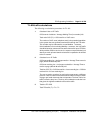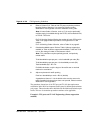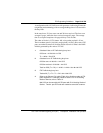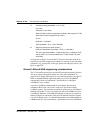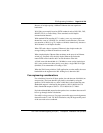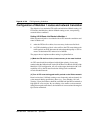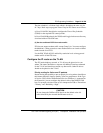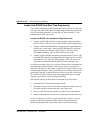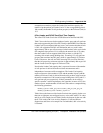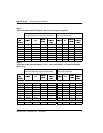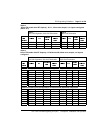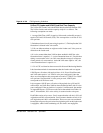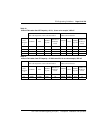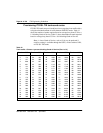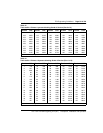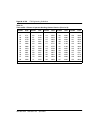
ITG Engineering Guidelines Page 89 of
378
ITG Trunk 2.0 ISDN Signaling Link (ISL) Description, Installation and Operation
assumptions are made to project the Leader Card real time capacity: the
number of probe packets per Leader Card is 25, the average holding time is
180 seconds, the number of calls per hour per port (on the Follower Cards) is
15.3.
8-Port Leader and DCHIP Card Real Time Capacit
y
The 8-Port ITG Trunk Card is the NTCW80 based on the Intel 486 CPU.
Table 7 shows the forecast for the number of nodes, ports and calls per hour
that can be supported by the 8-Port ITG Trunk Leader/DCHIP Card when the
Leader Card is not configured with any ports. Case I assumes that the call mix
is 50% call origination and 50% call termination and as a result it takes
approximately 200 ms per call on average for the Leader Card to assist in the
call setup/tear-down process. If, for example, the network size is 25 nodes,
then the Leader Card can support 10648 calls per hour (or 19166 CCS,
assuming 180 second average holding time). Assuming 15.3 calls per hour
per port, that translates into 695 ports, which is approximately 87 Follower
Cards. If, however, the calls are 100% incoming calls (see Case II below),
then the call processing assistance real time is approximately 400 ms per call
and the Leader Card can support 43 Follower Cards.
Note that the Leader Card capacity that is expressed in terms of the number
of calls per hour is derived from the real time measurements and is
independent of customer traffic assumptions. The Leader Card capacity
expressed in terms of the number of CCS and the number of ports (and the
number of Follower Cards) is derived from the calls per hour value, based on
the traffic assumptions of 180 second average holding time (AHT) and 15.3
calls per hour per port, respectively. If these parameters do not reflect a
specific customer’s traffic requirements, the capacities in terms of CCS, the
number of ports, and the number of Follower Cards can be re-computed using
the following procedures:
Number_of_Ports = Calls_per_hour / Customer_calls_per_hour_per_port
Number_of_Follower_Cards = Number_of_Ports / 8
Table 8 shows the forecast of the Leader Card real time capacity for the case
that four or eight ports are configured to carry voice traffic with G.711 codec
and 10 ms voice sample size and Table 9 shows the forecast for the case with
the G.729A codec with Voice Activity Detection (VAD) and Silence
Suppression, and 30 ms voice sample size. For both tables, 40% voice activity
is assumed.



